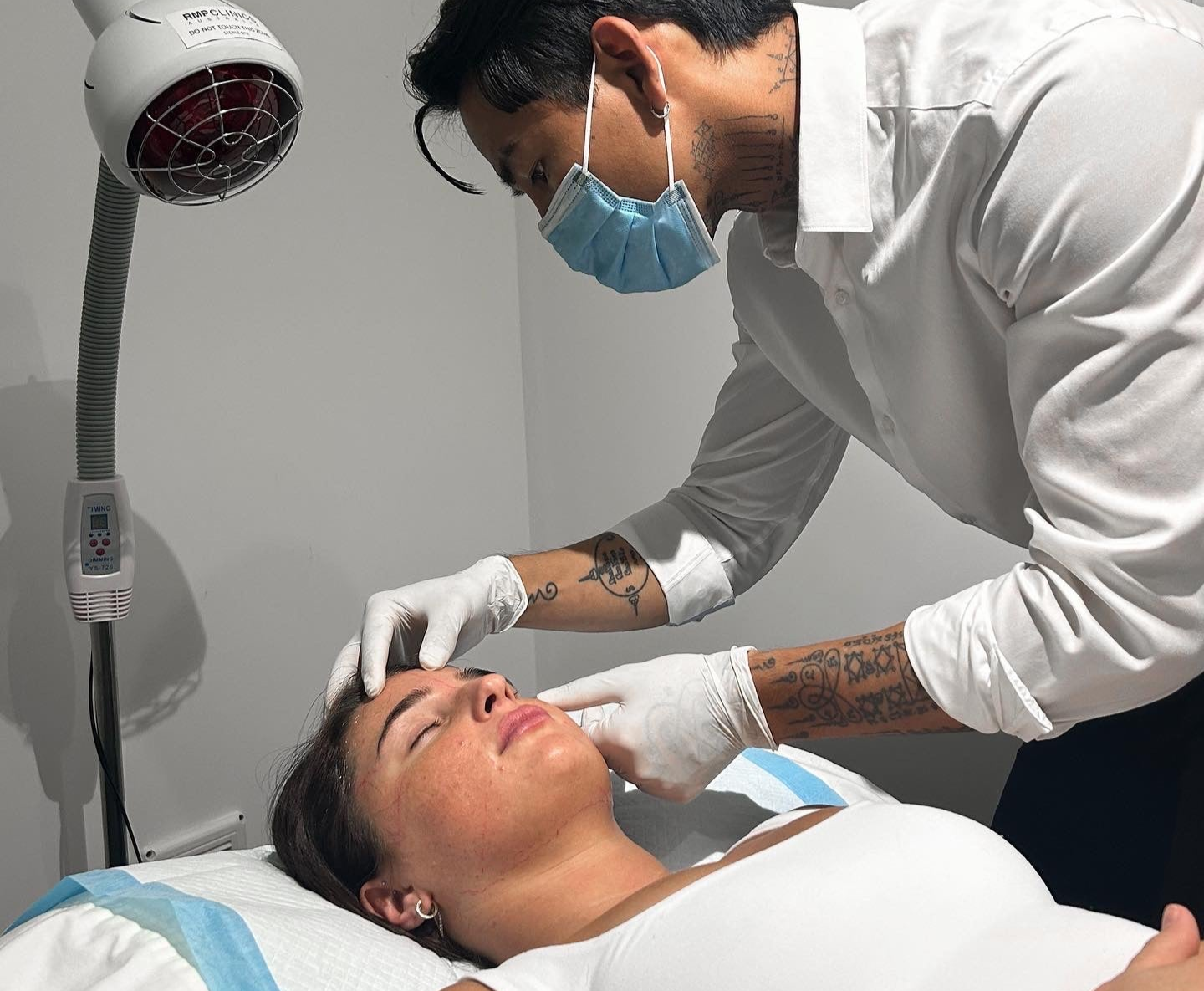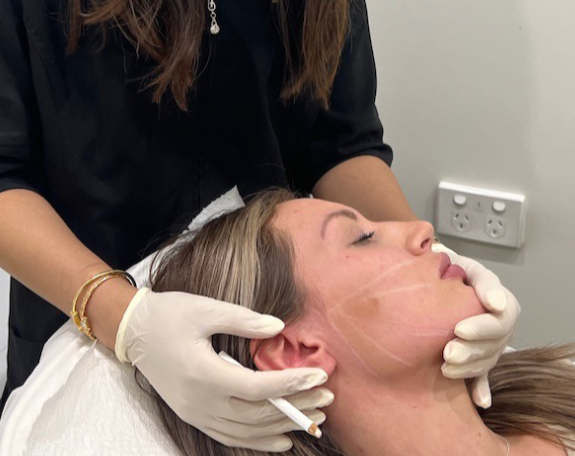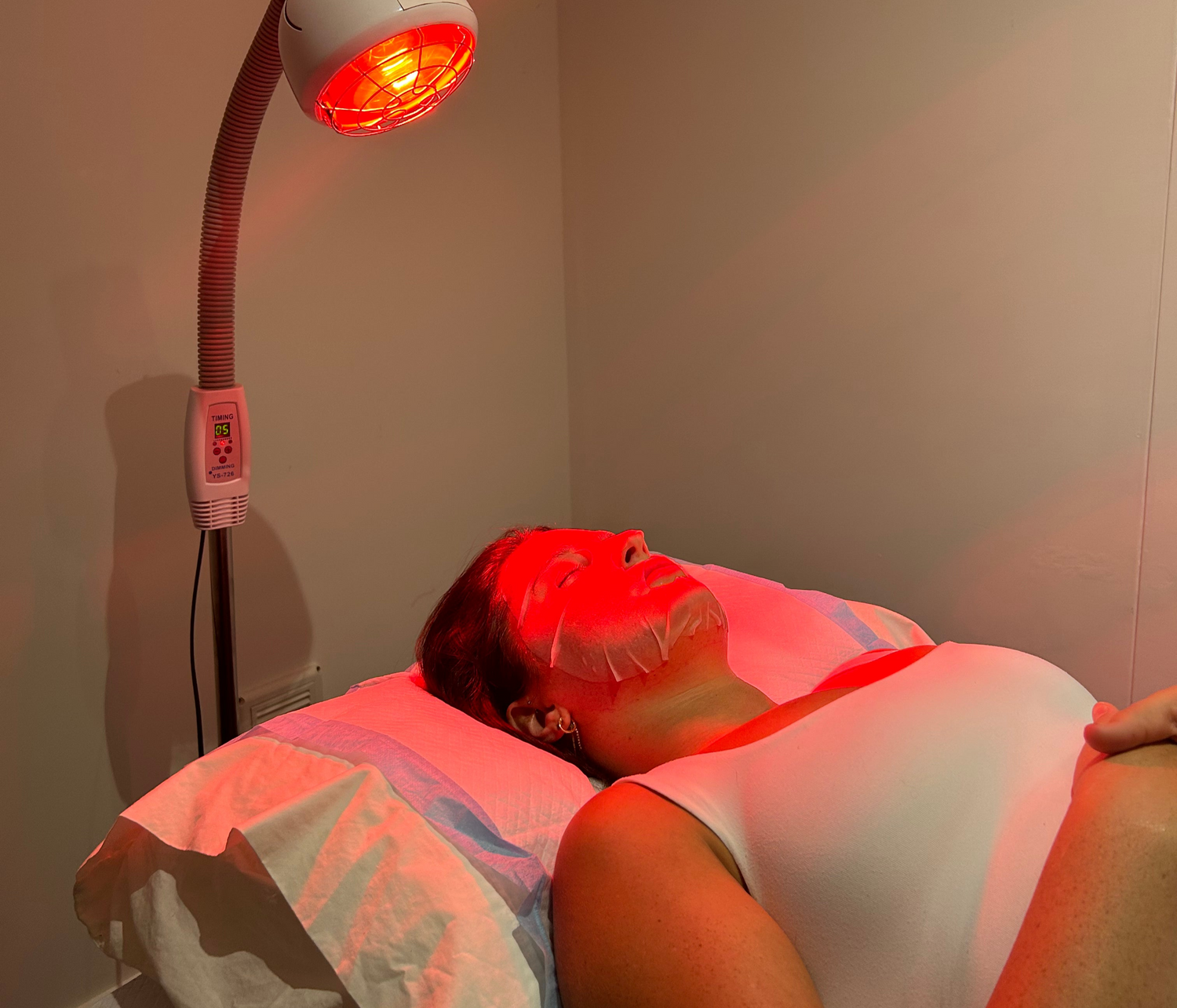
Microneedling Gold Coast
Microneedling, or collagen induction therapy, is a cosmetic procedure that uses fine needles to create tiny skin punctures, stimulating collagen and elastin production. This helps improve skin texture, reduce wrinkles and scars, and enhance overall skin tone.
-
How it works?
Microneedling, also referred to as collagen induction therapy, is a popular minimally invasive cosmetic procedure designed to rejuvenate the skin by harnessing the body’s natural healing processes. This treatment involves the use of a device equipped with fine needles to create tiny punctures, or micro-injuries, in the skin's surface. These controlled micro-injuries trigger the skin's natural wound-healing mechanisms, which in turn stimulate the production of collagen and elastin—two vital proteins responsible for maintaining skin’s structure, firmness, and elasticity.
-
During a microneedling session, a trained skincare professional uses a specialized device, often resembling a pen, to glide over the targeted area of the skin. The device's fine needles create precise micro-injuries at a specific depth, depending on the treatment goals and the condition of the skin. While the punctures are tiny and shallow, they are sufficient to initiate the body's healing response. This response involves the production of new collagen and elastin fibers, which gradually improve the skin's appearance.

Suitability and Considerations
Microneedling is generally safe and effective for most skin types and tones. It is particularly beneficial for individuals looking to address concerns such as:
- Fine lines and wrinkles
- Acne scars and other forms of scarring
- Uneven skin tone and texture
- Enlarged pores
- Stretch marks
However, there are some important considerations:
- Pre-existing Skin Conditions: Individuals with certain skin conditions, such as active acne, rosacea, eczema, or psoriasis, may not be ideal candidates for microneedling. Additionally, those with a history of keloid scarring or who are prone to developing scars should consult with a dermatologist before undergoing the procedure.
-
Improved Skin Texture
Smoothing Out Imperfections:
Microneedling is highly effective in improving the overall texture of the skin. It can reduce the appearance of fine lines, wrinkles, acne scars, and other surface irregularities, resulting in smoother, more even-toned skin. The increased production of collagen helps to plump the skin and smooth out uneven textures, giving the skin a more refined appearance.
-
Increased Collagen Production
Youthful Firmness and Elasticity:
Collagen is a key structural protein that gives the skin its firmness and elasticity. As we age, collagen production naturally decreases, leading to sagging skin, wrinkles, and loss of elasticity. Microneedling boosts collagen production, which helps to firm and tighten the skin, giving it a more youthful and resilient appearance over time. This makes microneedling an effective anti-aging treatment.
-
Enhanced Absorption of Skincare Products
Maximizing Treatment Benefits:
The micro-channels created by the needles not only stimulate collagen but also enhance the skin’s ability to absorb topical skincare products. This increased absorption allows serums, moisturizers, and other skincare treatments to penetrate deeper into the skin, making them more effective. This benefit is often utilized in combination with other treatments, such as applying growth factors or vitamin C serums immediately after microneedling to maximize results.
-
Minimal Downtime
Quick Recovery:
One of the major advantages of microneedling is its minimal downtime. Most individuals experience only mild redness and swelling following the procedure, which typically subsides within a few hours to a couple of days, depending on the intensity of the treatment. This makes microneedling a convenient option for those with busy schedules who seek effective skin rejuvenation without extended recovery periods.
-
Versatility
Wide Range of Treatment Areas:
Microneedling is a versatile procedure that can be performed on various parts of the body, not just the face. Common treatment areas include the neck, décolletage (chest), hands, and even stretch marks on the body. This versatility makes microneedling suitable for addressing a wide range of skin concerns across different body areas.
-

Pricing
The cost of this treatment will depend on the area treated or number of lesions. For our full price list visit prices.

Microneedling with Red Light Therapy
Red light therapy after microneedling offers several benefits. It helps accelerate the healing process by reducing inflammation and promoting collagen production, which enhances the overall results of microneedling. The therapy also soothes the skin, minimizing redness and irritation. Additionally, red light therapy boosts cell regeneration, leading to quicker recovery and improved skin texture. Overall, it enhances the effectiveness of microneedling, leaving the skin looking smoother, more radiant, and youthful.
Aftercare & Recovery
-
Before your treatment
Avoid any kind of tanning (Spray tanning, tanning injections, sun tanning and tanning beds) for 2 to 4 weeks before your treatment. Ideally, you should try to use SPF5O to prep your skin for 2 to 4 weeks before your treatment, especially if you are naturally darker skinned. You may even wish to consider using a natural Tyrosinase Inhibitor to helps ensure there is no overproduction of pigment in the skin aka hyperpigmentation.
- No facial acids 14 days before or 21 days after Plasma Pen.
- No Botox or fillers 21 days before or after Microneedling.
- PRP 21 days before or after Microneedling.
- No laser or peels (depending on intensity of peel) for 90 days before or after Microneedling.
- Surgical procedures like face lifts you must wait at least 6 months post-op/before Microneedling.
-
Immediately following treatment
- You may experience a “stinging” sensation in the treated area(s) immediately after treatment. This is normal and it generally only lasts for about an hour.
- If the treated area is swollen, you may apply ice packs covered with a clean cloth. Avoid taking anti-inflammatory medications like aspirin, ibuprofen or steroids if possible.
- If you are receiving a Microneedling treatment anywhere on your face or neck, we recommend you sleep on your back with your head elevated to reduce swelling.
- Do NOT cleanse the treated area until the following day.
- Do NOT exercise 48 hours after treatment or expose yourself to any heat, steam or sweat because this can intensify the inflammation that’s already present.
- Your technician will provide you with after care products and instructions. You must follow the provided aftercare.
- Protocol to expedite the healing process and avoid complications.
- The area that has been treated must NOT be covered with occlusive dressing or any type of sunblock, make-up, mascara, creams or any other products until the area has fully healed.
- It is unlikely you will ever get an infection from a microneedling, However, the first 12 hours post-treatment is vital that you could expose yourself to contaminants.
- You may return to work the straight after. However, you will not look your absolute best during the initial healing process (approximately 7 days).
- Expect redness, and dryness for the first 1 to 5 days post-treatment. This is normal but will usually be of a very minor nature.
-
Following days after treatment
- It is normal for the area that has been treated to be red/pink, swollen and feel tight and dry. Occasional weeping is normal and will settle.
- Tiny crusts will quickly form on the treated area. These may be visible for up to about a week. Do not pick these.
- The area(s) treated may be cleansed daily with room temperature water and your fingers. Avoid using washcloths or any other washing devices. Do NOT be tempted to rub, brush or exfoliate the area in any way to aid in the removal of the crusts.
- Do NOT stand with your face under a hot shower for the first 3-4 days and avoid shower gels. This could increase swelling.
- Avoid swimming or chlorinated water and sea water as it can increase irritation and cause possible infections.
- Keep scabs/crusts moist by applying provided aftercare three times a day – but only in small amounts, do not soak the area.
- Once the scabs have fallen off (approximately 7 days), your skin may be a little pink. You may begin to apply your normal foundation /make-up/sunblock but avoid using skincare products containing glycolic/salicylic/retinoic/AHA/ scrubs/Clarisonic or any other active exfoliating ingredients/devices for at least 21 days, as this will cause irritation. ABSOLUTELY NO MAKEUP UNTIL SCABS HAVE FALLEN OFF.
- Avoid sun exposure. Once the scabs have fallen off, you must wear a physical sunblock (zinc & titanium) and a hat while your skin is in the healing stages (pink in color) and you should continue to do so for at least the next 12 weeks to avoid hyperpigmentation.
- Do NOT sunbath/sun tanning beds for 10–12 week post procedure
- Do NOT have any other facial treatments in the same treatment area while your skin is healing (12 weeks).

